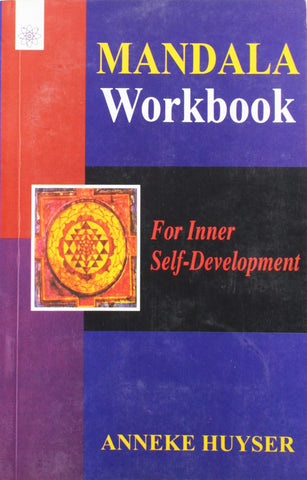Your cart is empty now.
Gender, Identity and Tibetan Buddhism is a cross-cultural study which creates links between the symbolic representations of gender in the philosophy of Tibetan Buddhism and contemporary thinking in relation to identity politics and intersubjectivity. it traces some of the important cultural factors in the representations of gender in Tibet's archaic images, and its monastic institutions, and in the light of Tibetan Buddhism's popularity in the west, June Campbell raises important questions concerning the potential uses and abuses of power, authority and secrecy in the sexual practices of Tibetan Tantra, now that its teachings are being disseminated throughout the world.
I warmly welcome this new paperback edition of my book Traveler in Space. Its publication gives me the opportunity to reflect again on the scope of the book and on the ideas I first put forward in 1996. It also enables me to make further clarification through revision of parts of the text, and for the expansion of certain avenues of thought, which, I believe, have considerable relevance for our understanding of what might constitute the spiritual dimension to life in the twenty-first century. Approaching this new edition, therefore, I have chosen to set out a much broader context through which readers with different perspectives on religion, gender issues and cultural studies might find, a meaningful entry into reading the text. Hopefully, this might then offer the possibility for the book to provide, as one reviewer already declared, 'something of an opening into all religions')
In many ways, therefore, this book is not just about Tibetan Buddhism, nor only about gender and identity in it. Although these topics forM the main, overt strands within the text, I have tried to link ideas concerning the ways in which human identity is constructed, that is, through relationship, with a grander theme which pertains to the evolution of religious thought. These two themes are interwoven in the text, through the perspective of gender, in order not only to create some understanding of the ways in which gender is a key factor in Tibetan Buddhism's representational system, but also to suggest that issues of, or philosophies pertaining to, gender have always been key factors in all religious discourse.
It is certainly the case that in Tibetan Buddhism, one would have difficulty in arguing that gender was of no significance, for here, as in Hinduism, one finds at its core exalted images of sexuality acting as symbols of transcendence. Furthermore, at the intersection between belief and social custom, one finds a communal project between the theocracy and the lay community that pertains to a belief in divinity, and results in the creation of a mystical infrastructure in society. Both these aspects, the symbolic and the real, are, as I tried to demonstrate, concerned with two of the most important and universal human preoccupations, sexuality and parenthood. No one could deny that the Tantric representations of 'father-mother' deities engaged in the sexual act, convey anything other than an extraordinary arena of significance through the medium of what can only be described as a transcendental 'primal scene'. And central to the Tibetan Buddhist philosophy of 'enlightenment', the paintings, sculptures and visualized meditations on the Tantric sexual act, together with the rituals surrounding the conception and birth of divine beings in the social sphere, form a complex set of symbols, rich in the imagery of parental sexuality. These representations formed the basis of my study, and were a determining factor in my choice of a psychoanalytical perspective on the question of the connection between sexuality and religion. It was Freud himself who clearly recognized the importance of this connection, when he declared that 'the roots of the need for religion are in the parental complex'.2 In a sense one might argue today that everything, both biological and emotional, has its roots `in the parental complex', and that this statement is not quite as reductionist as it first appears. Indeed, Freud, despite his known hostility to religion, was quick to notice that religious belief had a beneficial effect on believers, because, according to him, it 'removes their parental complex ... while the unbeliever has to grapple with the problem on his own' (italics mine).3
This interesting insight into the value of religious belief depended on the notion that the evolution of belief systems in, society relies not only on the creation of external structures and institutions, but also on personal history, and in particular, our most intimate human relation-ships. That is to say, the objects of religious belief are 'created from representational materials whose sources are the representations of primary objects',4 in other words, our first and formative relation-ships. This phenomenon, naturally, would be just as true for a Tibetan as it is for a westerner, because despite the obvious cultural differences of expression, it is those things which constitute custom and belief, that is, the expression of relationship, of language and of meaning, which are at the very heart of what it means to be human. Taking this into account, we can then appreciate that from the moment of conception, through childhood and into adolescence, it is the dynamic interaction between the self and the other, which conditions our sense of who we are, and breathes life into our capacity to believe and, ultimately, what we believe in.
In other words, the symbolic components of religious thought are, in themselves, to objects' in that they form the basis for a relationship with someone or something that is construed as 'other'. And it is in this relationship between individuals and whatever they are bound to, or choose to, believe in that humans find spiritual meaning. James Jones describes religious experience as a 'manifestation of internalized objects ... a relationship (with God, the sacred, the cosmos, or some reality beyond the phenomenal world of space and time)' (italics original),5 and he considers that the psychoanalytic study of religion ought to 'investigate the way in which individuals' religious beliefs, experiences, and practices reflect the dynamics active in their construing of experience and in the deep structure of their internalized relationships.''
In essence, this is the arena of meaning into which Traveller in Space ventured, not just through the symbols of Tibetan- culture, but also through the symbolic structural language of western philosophy, both of which have their origins in unique sets of cultural relationships. From the broadest perspective therefore, the book attempted to relate questions of gender, sexuality and parenthood (so crucial to an individual's sense of who they are), to the various different components that are discernible in Tibetan Buddhism and, through that, to demonstrate how religious thought evolved in that system. These different components, that is to say, shamanism, mother goddess worship, Buddhist Tantra and patriarchal monasticism, represent different historical phases in the development of Tibetan Buddhist society, and each bears characteristics that, according to Erik Erikson, all religions have displayed, in one form or another, throughout their evolutionary history.? This fact in itself makes Tibetan Buddhism a religion worthy of contemporary study.
For example, the earliest known beliefs of humanity, such as animism and totemism, arose in societies where survival was a priority, and depended primarily on magical thinking with regard to inanimate objects, animals and forces in nature. The beliefs that sprang from the basic experiences of being in a tribal situation were also born out of an instinctual response to the external world, and became symbolized in images pertaining to the powers of nature. These powers required to be placated or mediated through the person of the shaman, a magician who not only would act on behalf of the community, but would also be a key intermediary between humanity and the forces of the unknown. Historically, the appeal of magic has been great in all cultures, and despite attempts in many religions to repress it, religious institutions are always susceptible to the forces of magical thinking, which often re-emerge taking the form of cults or sects that are driven by irrational beliefs and fundamentalism, and whose aim is to give, to the faithful, a sense of control over the external world. In Tibetan Buddhism, the shamanic aspect is the oldest and arguably the most persistent and strongly defended element in its belief system.
Secondly, the religious worship of the mother goddess forms a strong component within many ancient beliefs, and is still a vibrant force within Hinduism and in some Christian faiths, where devotion to the Virgin Mary takes a variety of archaic forms in different societies. In contemporary terms, it has also manifested most recently in goddess worship and in pagan ritual and belief. With its focus on an often overwhelming figure who symbolizes, first and foremost, the powers of fertility and creativity, the mother imago represents an idealized image in whom one can express a desire for unconditional love, and for union with a primary object of immense significance. For the devotee, religious thought around the mother concerns itself with the glorification of her sex and the desire to utilize her powers, sometimes even her anger, as in the Hindu devotion to Kali, or the Tibetan Buddhist to Penden Lhamo. In this way, devotees yearn to merge completely with the body of the mother, so that they might experience, as Freud put it, 'the oceanic feeling',8 and with it, the healing of the split that personal autonomy, with all its vicissitudes, most certainly brings. In the polytheistic practices of Tibetan Buddhism, this aspect finds symbolic expression in many meditative acts that emphasize merging, including devotional practices towards 'savior' mother goddesses, and wrathful mothers who defend the faith. Whilst in Tantrism, the sexual acts aim to bring about the state of Buddhist enlightenment through the union of the yogi with the female (mother goddess) consort.
A third dimension to religious representation is found in obedience m father and son gods, whose historical elevation to divinity signified the idea that paternity was meaningful for us all. Through adherence m patriarchal law, one becomes subject to the authority of the father and his moral code, thus offering a possibility for. order in the world, and forgiveness, as in the case of Christianity, through the grace of the son. Judaism and Islam, in their different ways, both place a great emphasis on the patriarchal imperative, through god the father, or the world of Mohammed. In Tibetan, Buddhism this aspect finds expression in the lineage of lamas, the father son relationship of the student to his guru, and the authority of the lineage which is mythologized back to a connection with the historical figure of Gautama Buddha. It also finds expression in the dispcline of monasticism, with its inherent misogyny.
TIBETAN BUDDHISM'S ENCOUNTER WITH THE WEST Before embarking on this study of gender, identity and Tibetan Buddhism, it is necessary to present to the reader the context of this work, together with the theoretical approaches that I have used in writing it. On the face of it, a study of a particular aspect of any religion may seem straightforward enough, bin in this case, the complexities are many. First of all, despite the fact that Buddhism has become popular as a religious practice in the west, the teachings of Tibetan Buddhism are little known generally, and are often the subject of much imaginative speculation and misunderstanding, largely as a result of the legacy of early Victorian romanticism. Secondly, although the major focus of the book is an examination of issues of gender and identity in Tibetan Buddhism, this does not mean that the book is purely about gendered symbols, or indeed about the lives of specific women and men, but rather an examination of the historical and institutional context of the religion, as a means of analyzing and understanding the Tibetan religious philosophy of the gendered body. As part of my analysis I have had to take into account the contemporary encounter of Tibetan Buddhism with the west, and the implications of that encounter, particularly in the light of the importance placed by Tibetan Buddhists on the centrality of sexual imagery in their religious icons and texts.
There can be few people in the west who, on hearing the name of Tibet, do not conjure up pictures in their minds of vast mountainous landscapes, mysterious Buddhist monasteries and magical rituals. I was certainly one of them, and, at the early age of ten, decided that one day I would travel to Tibet and become a Buddhist. As it turned out, only one of my wishes came true, for in 1959 the Chinese government annexed Tibet and it became virtually closed to outside visitors, and the Tibetan religious traditions were severely repressed 1* the Communist regime that replaced the ancient theocracy. At the outset, however, the heads of the four main schools of Tibetan Buddhism (the Nyingma, Kagyu, Sakya and Gelug), fled into exile in India with about 80,000 followers, and there they established new monasteries in their refugee communities, which kept alive the spirit and traditions of their homeland. Two young Tibetan lamas of the Kagyu lineage eventually found their way to the United Kingdom, and in 1967 opened the first Tibetan religious centre in the west, in the borders of Scotland, where I met them the following year and became a Buddhist by 'taking refuge'.1 Shortly afterwards, I set out for the foothills of the Himalayas to a nunnery run by a small community of Tibetans in exile and it was there, whilst working with the refugees, that I began my studies of the Tibetan language and the philosophy of Buddhism, known as the dharma. Later, in the 1970s, I visited India for a second time at the invitation of a Tibetan lama, Kalu Rinpoche, and then travelled throughout Europe and North America as his interpreter, providing the link, through language, between him and a growing number of students worldwide. Kalu Rinpoche was a very high-ranking yogi-Jama of the Kagyu lineage, and one of the oldest lamas in exile at that time. He had personally spent 14 years in solitary retreat, and counted amongst his students the highest ranking lamas in Tibet. As abbot of his own monastery, he had taken vows of celibacy and openly lived as a monk, but what was not widely known about him was that he secretly had sexual partners. It was my involvement with him, and my knowledge of his double life and the ability he (and many others) had, to sustain such a way of life within the system; which affected me profoundly, and led me, eventually, to study the symbolic structures of Tibetan Buddhism in more depth.
Since these early days hundreds of dharma centers have been established by Tibetans all over the world, their assets running into billions of dollars2 and their prominence ever increasing as the teachings of Buddhism gain popularity in the west. This process, set in motion by the Chinese political actions of the 1950s, gave people across the world access to a religious tradition that had been largely hidden for centuries by the geographical inaccessibility of Tibet. What was particularly remarkable about this series of events was that in a relatively short space of time, the highest Tibetan lamas in exile managed to establish alternative sources of income and support across the globe, in sharp contrast to many other political refugees worldwide who have faced a more terrible fate. One of the reasons for the extraordinary success of the Tibetans in gaining financial support from westerners, was the upsurge of interest in the west in the Buddhist religion. The Tibetans capitalized on this, not only in order to open the doors of their traditional Buddhist way of life, to those who sought that knowledge, and certainly not solely as a proselytizing exercise (for strictly speaking they do not believe in missionary work), but in order to keep their own culture and belief system alive outside of Tibet. 'While the Chinese zealously imposed their values and the, principles of communism on the non-secular society that was Tibet, the Tibetans in exile, alarmed at the prospect of the destruction of their culture, set out to sustain their tradition outside its societal context. This situation led to the establishing, by the diaspora, of the unusual structures and institutions of Tibetan Buddhism not only in many developing countries in Asia, but also within the context of many western societies throughout the world. This unique juncture of events, which involved the movement of people, ideas, institutions, and culture across continents, brought about a moment in the history of the Tibetan civilization of the last thousand years in which, at worst, the extinction of its ancient culture was faced, or at the very least the social structures and geographical grandeur of Tibet and its landscape would no longer be the sole context in which Tibetan Buddhism thrived.
In considering the potential value of my study of Tibetan Buddhism, it is certainly the case that the promotion of any religious system that purports to contain truths of universal relevance, outside of the cultural environment in which that system first evolved, is a subject worthy of debate. Furthermore, as I hope to show, the particularly unique relationship between the institutional structures of their society, their religious beliefs, and the consequential effects on notions of gender and identity, make this debate very interesting, and all the more so since many western men have achieved positions of power within the Tibetan Buddhist institution. The historical events of 1959 which eventually brought about the widespread study of Tibetan Buddhism by westerners, meant that the teachings of the lamas began to be transmitted in cultural environments vastly different CO the ones visited by earlier western Tibetologists and orient lists. For the Tibetans, however, there was naturally a problem in the transmission of their teachings outside their societal structures, a problem which had the potential to lead to enormous cross-cultural misunderstandings and misgivings.
As a largely oral tradition (indeed the name of one of the schools -
the Kagyu [Tibetan ka. rgyud] - literally means 'lineage by mouth'), the Tibetan religion was always under the threat of degeneration, once its institutions left Tibet. This threat hovers over all fragile, oral cultures, for as John Potter has remarked, 'Oral cultures are capable of immense sophistication, and tend to become visible only when they come into contact with the literate genres that are destined to replace them.'3 The Tibetan culture may not have been totally 'invisible', although some might argue that it was, but it was certainly remote, and as such did not come into contact with many areas of the world until it was forced into the international arena when the Chinese attempted to replace the religious culture with the dogmas of communism. As for the question of the western 'literate genres' with which it has come into contact, it remains to be seen whether `replacement' or evolution of the Tibetan Buddhist culture will take place. What is sure is that those aspects of the religious tradition which find little resonance in the mores of western society will be discussed, criticized, debated and perhaps even attacked,4 whilst those aspects which may add something to the contemporary understanding of human nature will be 'revalorized'.5
There is no doubt that the greatest danger to Tibetans' cultural tradition is the threat to the continuation of their religious institutions whose traditions have depended on the very old practice of selecting a child to replace a dead lama of high status, and for that child to be considered his 'incarnation'. These reincarnate lamas (known as tulkus, Tibetan sprul.sku), who hold immense .spiritual and political power, maintained their status in Tibetan culture through the common belief in their actual divinity. It is these positions which will certainly be under threat should the practice, already begun by the Tibetans themselves,6 of choosing more and more western boys (or even girls, as suggested by some)7 to be enthroned as the reincarnations of dead Tibetan lamas, and to head Tibetan Buddhist monasteries and religious centers throughout the world. Additionally, there is a possibility that- the global forces of secularism and materialism may overpower the spiritual dimension of the oral tradition, which rested comfortably in the high plate aux of Tibet, and that the Tibetans themselves may be willing participants in a process that ultimately swallows up their culture. If Tibetan lamas themselves succumb to the pressures of western materialism, and the con-temporary cult of celebrity, or if the highest positions of power are gradually taken over by western Incarnations', there seems little doubt that the traditions of the Vajrayana will alter radically.
THE BASICS OF TIBETAN BUDDHISM
Clearly, it would be impossible here to examine the many and varied facets of Tibetan Buddhism in any great depth. However, for those completely unfamiliar with the teachings of this form of Buddhism, I will set out the most basic elements of the religion, specifying those areas that make it so different from other forms of Buddhism and highlighting the points that I consider the most relevant in the context of this book. The first few chapters of the book will then elucidate the unique features I discuss here, and place their development within an historical context. Certainly there are many aspects of Tibetan Buddhism, the Vajrayana, which are familiar to people who know anything about Buddhism in general, e.g. the belief in karma, in reincarnation, in the practice of non-violence to all living beings, in the non-existence of a distinct self, and in meditation as a means to achieve spiritual realization. These beliefs and principles are upheld by all Buddhists in the many countries which practice Buddhism, but each tradition developed in a different way, and placed emphasis on different aspects of the teachings which the Buddha himself was said to have transmitted.
Most people are also aware that Buddhism has a very strong monastic tradition, and that this tradition reflects the emphasis which Buddhists often place on the renunciation of desire as the key component in religious practice. Monasticism became the main basis of the 77teravada tradition, which is found in countries such as Sri Lankan Thailand, but was also a major component in the other, including that of Tibet, which had a monastic and a lay priesthood. The position of Tibetan Buddhist nuns, however, was nationally one of inferiority, partly because the female lineage that for full ordination did not evolve in Tibet, and therefore their got:, was lower than that of the men, and partly because few women given access to the scholarly or most secret Tantric tradition.
Delivery and Shipping Policy
- INTERNATIONAL SHIPPING
- Rs.1000-1100/kg
- ESTD. Delivery Time: 2-3 weeks (depending on location)
- Bubble Wrapped with Extra Padding
- NATIONAL SHIPPING
- NCR: Rs. 30/half kg
- Standard: Rs. 80/half kg
- Express shipments also available on Request
- ESTD. Delivery Time: Ranging from 1-4 days up to 7 business days (Depending on your choice of Delivery)
- TRACKING
- All orders; national or international, will be provided with a Tracking ID to check the status of their respective orders
- Depending on the Shipping Service, Tracking ID may be used on their respective tracking portals
Frequently Asked Questions (FAQs)
Domestic Shipping: 3-4 Days (after shipping)
International Shipping: 1-2 weeks (based on your location)
You will receive an email once your order has been shipped or you can email us if you didn't receive tracking details (info@mlbd.co.in)
Every book that we sell is the latest edition except all the rare books
Yes, we do provide free shipping, only on domestic orders (within India) above Rs.1500











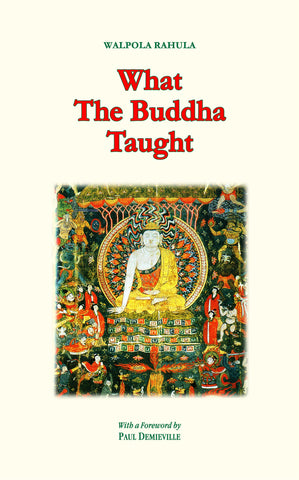
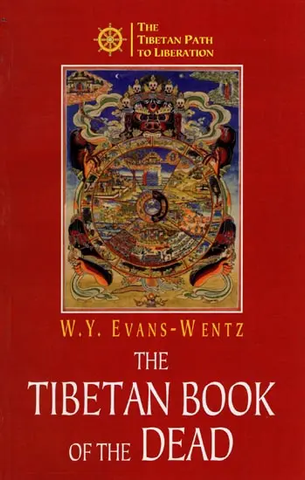
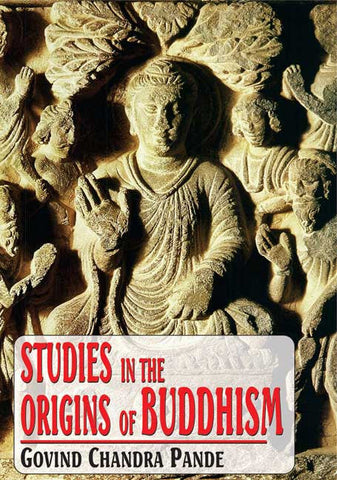
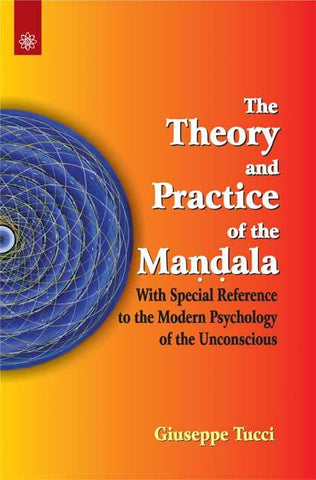
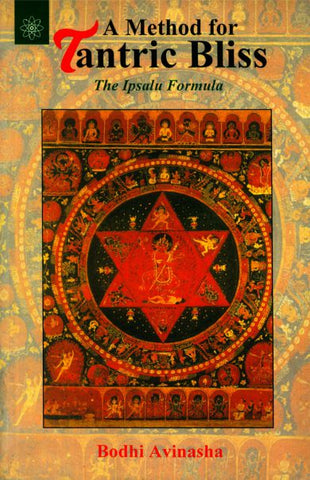

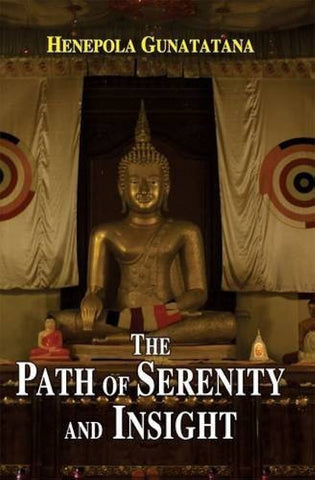
![The Rishukyo [Buddhica Britannica Vol.3]: The Sino-Japanese Tantric Prajnaparamita in 150 Verses (Amoghavajra's Version)](http://www.motilalbanarsidass.com/cdn/shop/products/RISHUKYO_large.jpg?v=1675417651)
